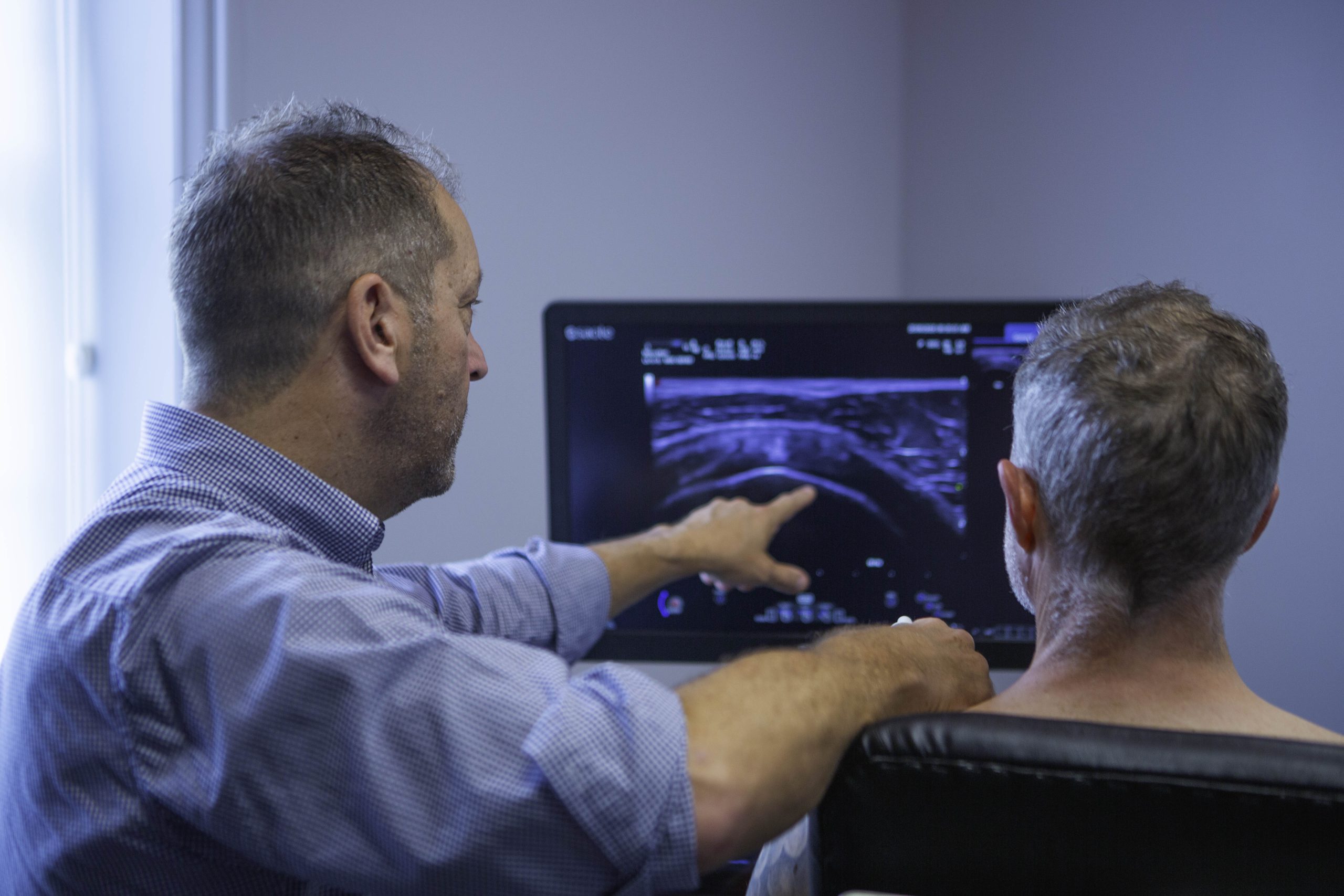The ‘tech-neck’ epidemic
What is ‘tech-neck’?
In today’s digital age, many of us find ourselves tethered to our screens for hours on end. While technology has undoubtedly revolutionised the way we work, it’s also brought about a new set of health challenges. One of the most prevalent issues has been labelled ‘tech-neck’, which describes pain in the upper back and neck caused by prolonged screen time at the computer. It is associated with an increased risk of limited range of motion in the cervical spine and shoulder girdle which can wreak havoc on our posture and lead to chronic discomfort. The forward head posture often adopted when using screens can place up to 27kg of strain on the neck, leading to muscle imbalances and potential long-term damage.
Is it an epidemic?
Well not quite – but it is becoming increasingly common. Recent studies have illuminated the growing problem of neck pain related to screen time – particularly in office environments. Research has consistently shown a significant positive correlation between screen use and neck discomfort. This can affect individuals across a wide age range but particularly so in the younger generation (10-25) who previously escaped such a problem! The prevalence of ‘tech-neck’ has definitely intensified with the increasing reliance on technology in workplaces and educational institutions.
The statistics are eye-opening. The prevalence of neck pain among office workers is alarmingly high, with some studies reporting that up to 70% of office workers experience neck pain at some point in their careers. The pandemic did us no favours either with the average screen time of children increasing from 4.4 hours to 6.15 hours per day! For adults in office settings, these numbers can be even higher.
How can I avoid ‘tech-neck’?
Fear not! There are evidence-based strategies (that means that there’s evidence to show their effectiveness) you can employ to combat this growing issue. Here are some top tips to help you avoid neck pain in the office:
– Take frequent breaks: Implement the 20-20-20 rule. Every 20 minutes, take a 20-second break and look at something 20 feet away.
– Optimise your workstation: Ensure your monitor is positioned so that your gaze falls in the top third of the screen. This helps maintain a neutral neck position.
– Practice good posture: Sit tall with your head balanced atop your spinal column. Imagine a string pulling you up from the crown of your head.
– Strengthen your back muscles: Incorporate exercises that target the upper back and neck muscles. This helps support proper posture and reduces neck pain risk.
– Stretch regularly: Incorporate neck and shoulder stretches into your daily routine. Simple exercises like neck rotations and shoulder rolls can make a big difference.
– Stay hydrated: Proper hydration helps maintain the health of your intervertebral discs, which play a crucial role in neck mobility and comfort.
– Seek personalised help from The Physios: sometimes you might need some extra help or a tailored approach. Our expert team will be able to get to the root of the problem quickly and offer experienced ‘hands-on’ treatment to alleviate discomfort and restore normal movement and function.
By implementing these strategies, you can significantly reduce your risk of developing neck pain and improve your overall comfort in the office. Remember, prevention is key when it comes to maintaining a healthy neck and spine. Don’t let screen time become your own pain in your neck.
For a comprehensive assessment and treatment plan click here to book online, or call our friendly reception team on 0114 267 8181.









